The Nikkor Z 24-70mm F4 S is a constant-aperture, moderate-speed zoom for the full-frame mirrorless Nikon Z-series cameras and is offered as a kit lens for both the Nikon Z 6 and the high-resolution Z 7.
It features a retractable design and adopts 14 elements in 11 groups, which include one aspherical extra-low dispersion (ED), one spherical ED, and three aspherical elements. It also has nano crystal and Nikon integrated coatings to help mitigate flare and ghosting, while it uses a fluorine coating to help keep the front element clean.
Like others in the S-series, it has a rounded aperture to improve the disk-shaped rendering of out-of-focus highlights, and it is sealed against dust and moisture. The new lens also features an internal focusing system that uses a stepping motor and has a mechanism to reduce the effects of “focus breathing.’ The minimum focusing distance is 30cm (11.8″).
Externally, there’s a wide rubber zoom ring and a narrow, ribbed metal collar used by default for manual focus; however, it is customizable and can be set to adjust aperture values or exposure compensation.
Measuring 77.5 mm x 88.5 mm (3.07” x 3.5”) when retracted, and weighing 500 grams (1 lb, 1.7 oz), the new Nikkor Z 24-70mm F4 S is a relatively compact model.
Key specifications:
- Full-frame format
- Available in Z-mount only
- Aperture range f/4–f/22
- 72mm filter thread
- Minimum focus distance: 30cm (11.8”)
- Weight: 500 grams (1 lb, 1.7 oz)
Overall lens image quality
For a compact, moderate-speed zoom, the Nikon Nikkor Z 24-70mm F/4 S achieves a very good overall balance in performance, with consistent sharpness an overriding theme.
Mounted on the high-resolution 45.7MP Nikon Z 7 body, it scores 29 overall in our image quality rankings, putting the combination pretty much on equal footing with its closest rival, the Sony FE Carl Zeiss Vario-Tessar T* 24-70mm F4 ZA OSS.
With a Sharpness score of 19 PMpix, the figures for the S-series zoom are a little deceiving: although not as high as the Sony Zeiss equivalent, the new Nikon Z 24-70mm F4S zoom earns praise for its highly-uniform sharpness across the frame. That’s not only-wide open, but at each aperture and at practically every focal length.
However, vignetting is a little high at 70mm wide-open, as are both distortion and lateral chromatic aberration, at least without the lens’s built-in profiles applied. (You can expect better results for out-of-camera JPEGs and when using RAW conversion software that takes the profiles into account.)
This lens’s transmission is notable for its close-to F-stop values: the 4 T-Stop rating is averaged, so as always, it’s worth looking at our graph to see how that changes through the focal range.
Image quality compared to its competitors
Click here to open our interactive DxOMark lens comparison tool.
This is the first Z-series zoom that Nikon announced and the first that we’ve tested. Given the freedom that the Z system’s wider mount and short flange back affords, it’s interesting to see how Nikon optimized the optical design compared to the faster Nikon F-mount model. We’ve also included the Canon EF 24-70mm F4 in this review, a compact zoom made for DSLRs. Sony was quicker to adopt mirrorless, so we’ve included the F4 and more pro-oriented F2.8 models in the table above.
In terms of optical quality, the new Nikon’s overall score of 29 places it on equal footing with the highly-regarded and considerably more expensive AF-S Nikkor F2.8 model. Although the faster pro-oriented model has very slightly higher sharpness levels overall, it’s the uniform sharpness of the new Nikkor combined with lower lateral fringing that offsets its slightly higher distortion and vignetting.
Admittedly, with the Z 7 housing a slightly higher-resolution 45.7MP sensor versus 42MP in the Sony A7R II, the new Nikon compares very favorably to both the Sony Zeiss F4 model and the faster F2.8 models, but it can’t be directly compared. The same of course is true for the Canon EF 24-70mm F2.8L II mounted on the 50MP Canon EOS 5DS R. If you’re familiar with any of those combinations, that will give you an indication of the kind of performance you can expect.
In-depth comparisons
For a more detailed examination of optical quality, we’ll compare the new Nikkor Z zoom with the Sony-made, Zeiss-branded equivalent and the closest comparable model from Canon’s EF-series made for DSLRs. Note that while the Sony A7R II isn’t the latest high-resolution mirrorless model, it has a 42MP sensor similar to that in the more recent A7R III. (We hope to add the A7R III to our database soon; please check back to see the results in the relatively near future.)
Sharpness
Comparing this lens against the Sony made Zeiss and the Canon DSLR lens, the Nikon doesn’t quite match either in peak sharpness, but it’s a very consistent performer throughout the zoom range.
While it’s usually the shorter focal lengths that are the sharpest, the new Nikon’s peak sharpness is at 35mm f/5.6, but it is at its best at 50mm overall. Even then, however, it isn’t the sharpest of the three, but it isn’t far off; moreover, the Sony is the least impressive of the three at 70mm. While the Sony and Canon outshine the Nikon at some focal lengths, neither comes close in with respect to uniformity.
Usually there’s some disparity with sharpness when it’s measured horizontally and vertically, and that’s especially the case with zooms. A lens exhibiting astigmatism may show such a discrepancy, as you can see from the solid and dotted lines in the graph below.
In this instance, measured wide-open at 50mm, the Canon doesn’t perform that well, but the Sony Zeiss is the worst offender overall, with very high levels of astigmatism. Even so, while it may look bad when displayed like this on a graph, it may translate into attractive imagery—indeed, some of the most highly-regarded lenses show some astigmatism when tested. On the other hand, the Nikon exhibits practically none—an outstanding result, even though its overall the levels of sharpness don’t quite match its competitors’.
Chromatic aberration
To reduce lateral chromatic aberration, the Nikkor Z uses a built-in profile that can’t be turned off in-camera (unlike some models). Our results don’t take that built-in profile into account, so you’re likely to see less chromatic aberration in images—including on RAW files, where it’s typically applied automatically, regardless of the software settings.
Although our results show that one of the two colored fringes is well-corrected (close to 0 on the horizontal axis in our graph) from the center of the image to the corner, the complementary colored fringing diverges by as much as 15 microns on average. The fringing also doesn’t really clear up until between the 50-70mm focal length range. Both of the Nikon’s rivals average less than 5 microns from 35mm and up, which means the Nikon is the weakest of the three lenses in our comparison. This said, this type of fringing is usually easy to reduce or even remove completely, either in-camera or post-capture, and rarely adversely affects image quality after removal.
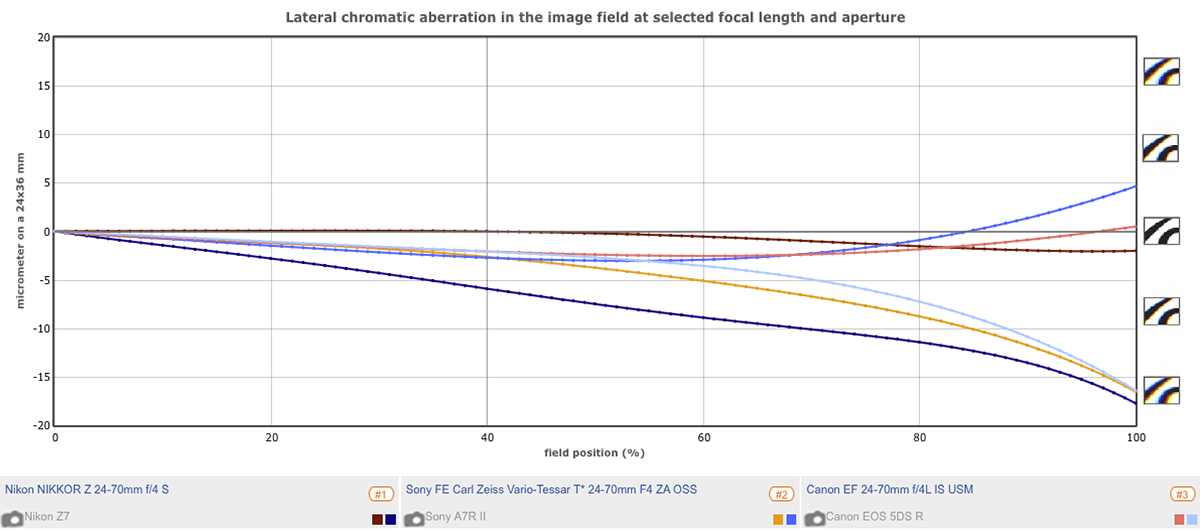
Lateral fringing occurs in the focus plane on both sides of high-contrast edges, usually as cyan and magenta fringing, so the above graph displays two values per lens. If a lens is perfectly corrected, both values would be at 0µ (indicated by the grey horizontal line in the center of the graph).
Geometric distortion
As with the results for lateral chromatic aberration, we’ve overridden Nikon’s automatically-applied built-in profile to reveal the maximum variation in geometric distortion. So it isn’t really surprising to see that without its built-in corrections, the Nikkor Z zoom has rather high barrel distortion at 24mm and displays high pincushion distortion at 70mm. It’s the widest variation of the three in our comparison, but the Sony has only marginally lower distortion overall—and even so, it has higher levels of pincushion at 35mm and 50mm.
The best-corrected model of the three is Canon EF model. It has only mild barrel distortion at 24mm and very low pincushion from 50mm through 70mm. In practice, though, images taken with the Nikkor with its automatically applied profile will display practically no distortion, even when using popular post-capture software on RAW files.
Vignetting (corner shading)
Vignetting is something you might expect to be lower with a wider mount, but that’s not necessarily the case. Both mirrorless models have higher levels of corner shading than the Canon EF lens; and although the Sony zoom has higher vignetting on average, the Nikkor reaches well over –2EV at 70mm when set to the initial aperture, and the vignetting never really disappears even when stopped down. At its lowest, it measures around –0.5 EV, and that’s not just visible in the corners but at the widest edges as well. Fortunately, this can be easily removed in-camera or after capture via software, but if it’s particularly heavy, it can reveal noise that can lead to a loss of detail after removal.
The graph below shows light fall-off for each of the three lenses set to 70mm at their widest aperture, when it would be at its most noticeable.
Transmission
This isn’t usually much of a concern for stills photographers, except that high transmission by definition means that there’s low reflectance and that can often result in low ghosting and flare. The Nikkor Z has exceptional transmission, but the Canon EF zoom has equally good if not very slightly better transmission levels. Variable transmission may be an issue when shooting video, but with the difference being no more than 0.1EV over the whole zoom range, it’s unlikely to be problematic.
Conclusion: Great all-rounder for Nikon Z users
When Nikon announced the new wider Z-mount with a short flange back, the prevailing thought was that there would be a real leap in image quality. The Nikkor Z 24-70mm F/4S is without doubt an attractive addition—it is, after all, a very compact and user-friendly lens—but the best way to describe its optical performance (at least on the high-resolution Z 7) is “well-rounded.” It admittedly brings unprecedented uniformity to a zoom—there’s no measurable astigmatism—but that appears to come at the price of outright resolution. There’s also no denying it has excellent transmission, but unless you’re into serious film-making, that isn’t going to be high on your wish-list. Bought separately, it’s also not what we would call inexpensive, especially without OIS. But when purchased as part of a kit, it’s an entirely different proposition and well worth taking a closer look.
In this review, we have compared the Nikkor Z 24-70mm F/4S to its closest rivals from other brands. Remember that the lenses are intended to be used on different camera systems and mounts, so the comparisons are not strictly applicable.
As usual, you can create your own comparisons and in-depth analyses using our interactive image lens comparison tool.


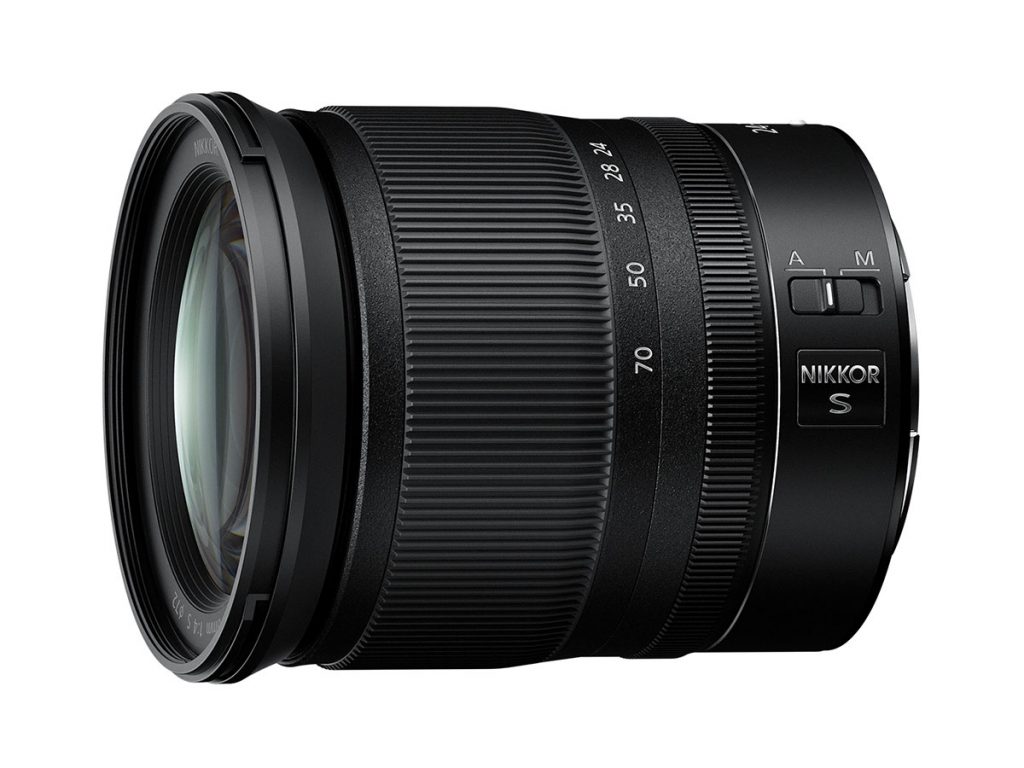


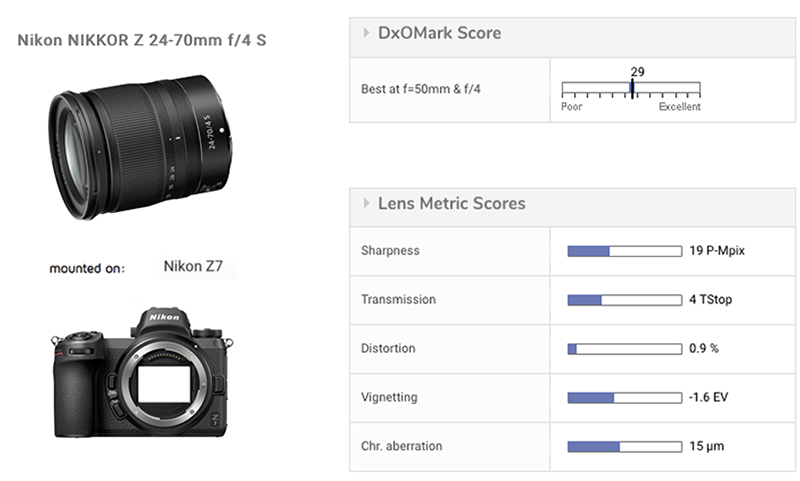
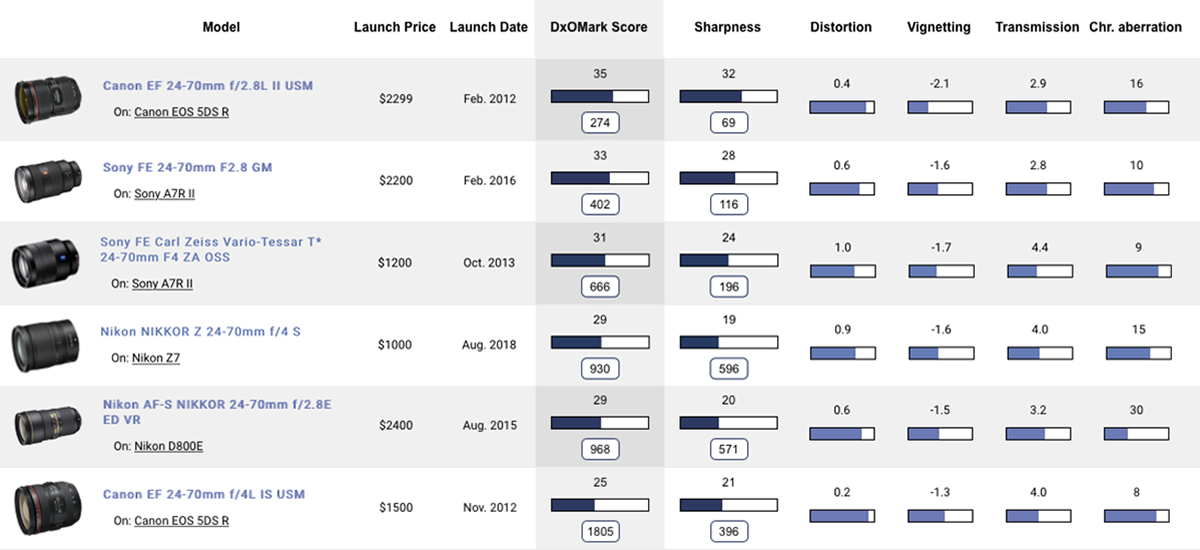
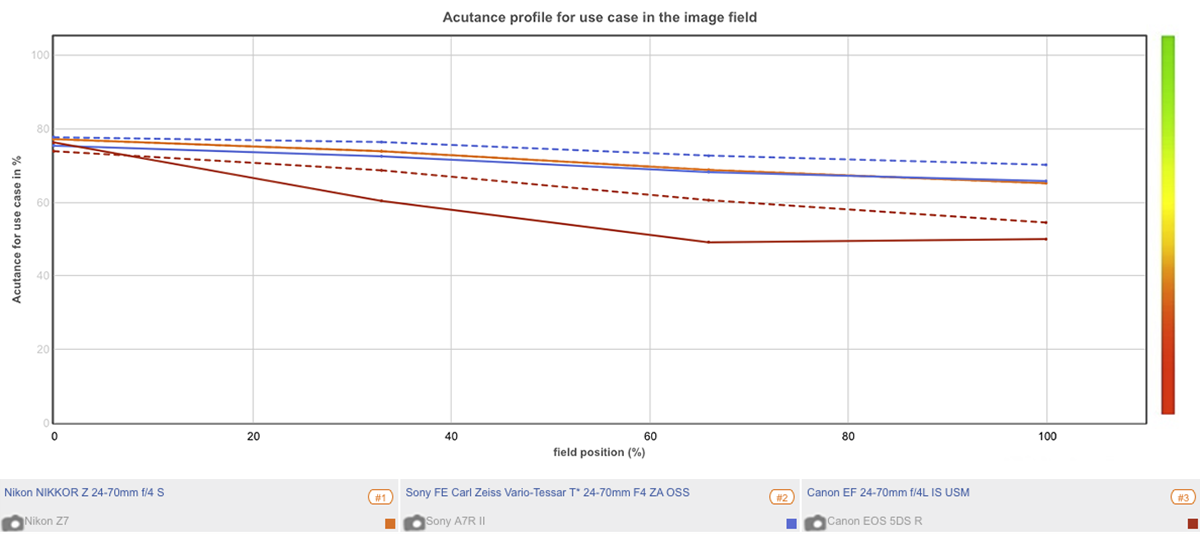
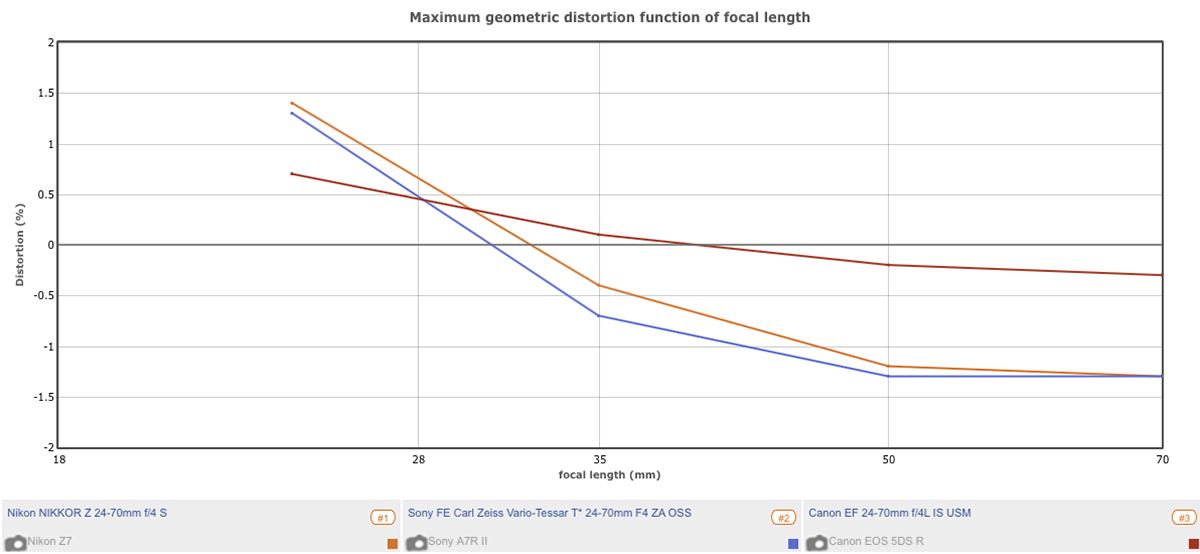
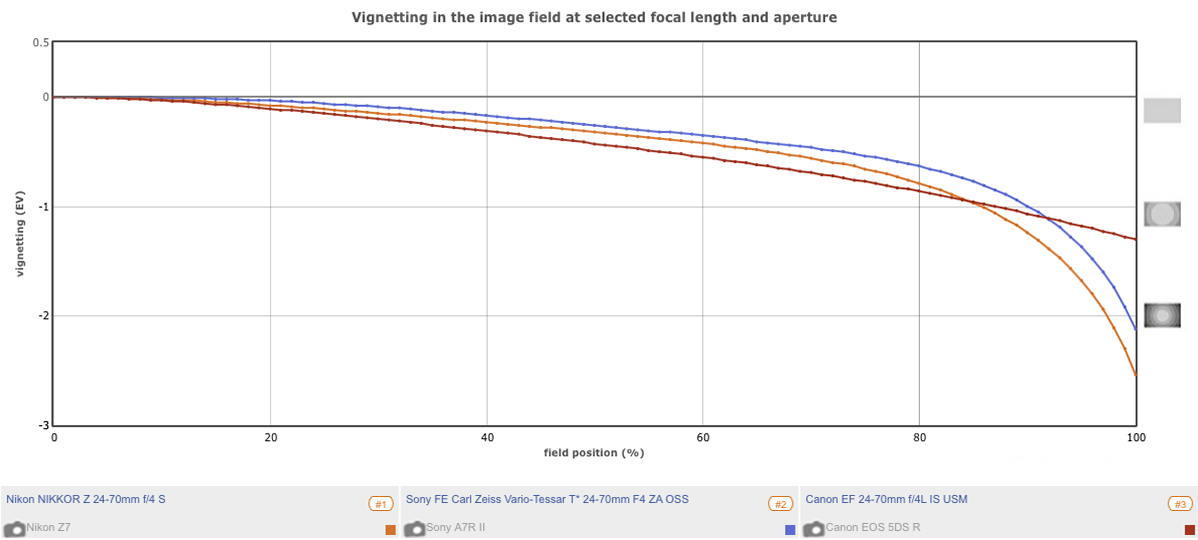
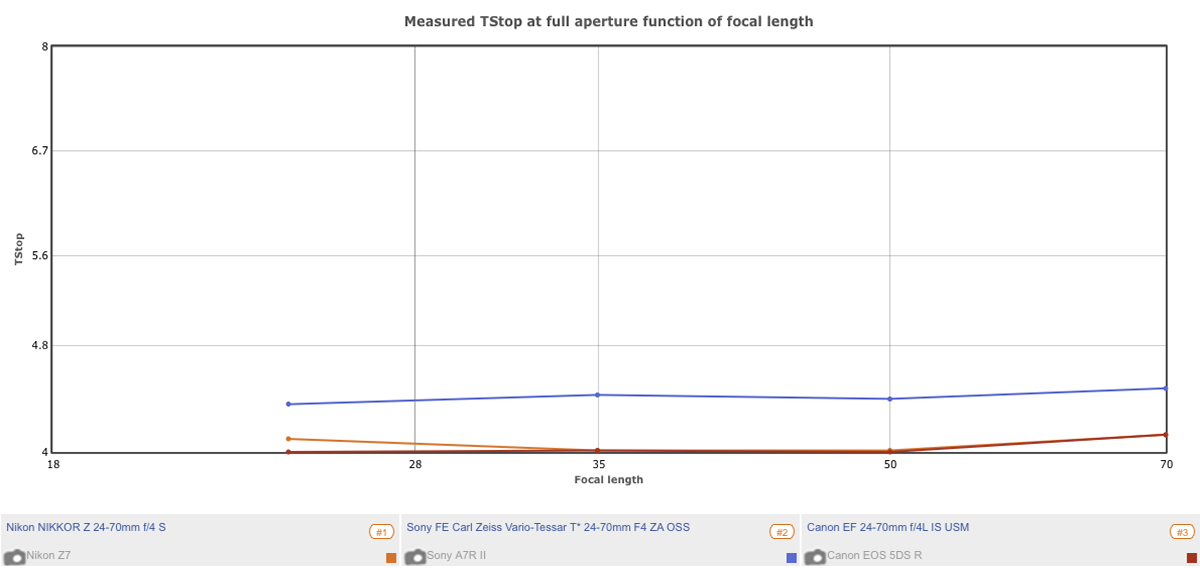


DXOMARK encourages its readers to share comments on the articles. To read or post comments, Disqus cookies are required. Change your Cookies Preferences and read more about our Comment Policy.